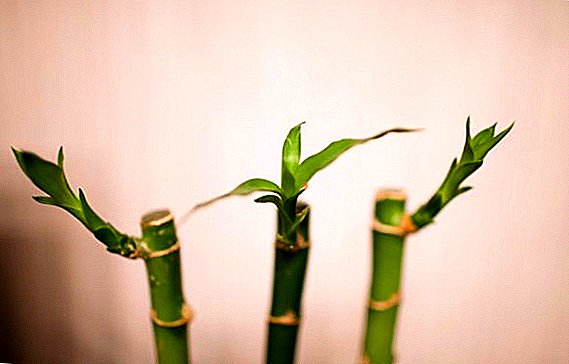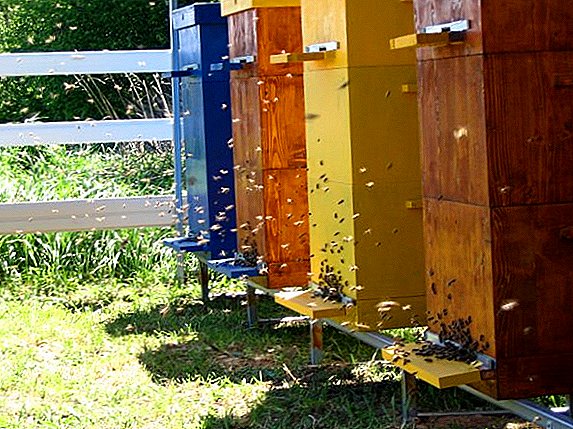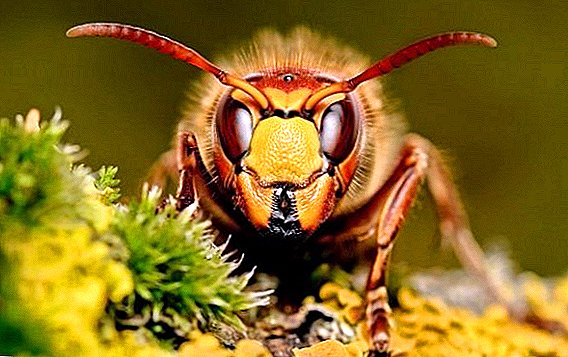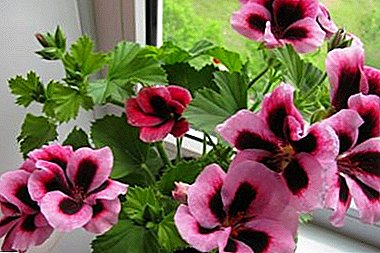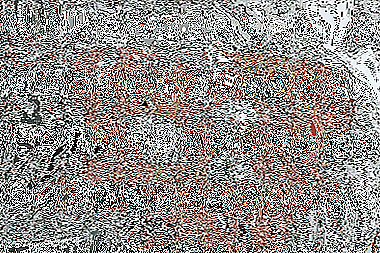 Many gardeners dream of acquiring a beautiful plant that will be unpretentious to care and will be able to grow at home. Especially pleasing to the eye evergreen trees, but most of them are very difficult to grow at home.
Many gardeners dream of acquiring a beautiful plant that will be unpretentious to care and will be able to grow at home. Especially pleasing to the eye evergreen trees, but most of them are very difficult to grow at home.
One of these attractive and evergreen trees is cryptomeria. In this article we will consider what cryptomeria is and what kind of care it is needed at home.
Cryptomeria: description and types of conifers
To begin with, let us consider the conditions under which cryptomeria and its main characteristics grow. This plant belongs to evergreen cypress trees family. Cryptomeria is also known as Japanese cedar.
Did you know? Homeland cryptomeria - China. In China, this tree grows over a large area. Cryptomeria also grows in Japan. The Japanese treat it with great respect and consider it their national symbol. In this regard, cryptomeria grows everywhere: in city alleys, in forest plantations, and in mountain forests.Consider the description of forms of cryptomeria. In nature, this plant can live a very long time and has a huge size. The height of such trees reaches 60 meters, the trunk in the girth is about 2 meters, and this is only for 150 years of the tree’s life.
This variety includes "Cryptoméria japónica" (Japanese cryptomeria). The crown of this decorative variety is quite thick, and the color varies from light green to dark green.
Japanese cedar is very popular in landscape gardening construction. Dwarf varieties are often used in the planning of landscape design recreation areas, in park landscaping. Thanks to breeding, there are dwarf forms that grow beautifully on terraces, in winter gardens or on balconies. At home, cryptomeria reaches a height of approximately 2 meters. Cryptomeria of such dwarf species and varieties as "Elegans", "Bandai-sugi", "Araucarioides", "Dacrydioides", "Compressa", "Globosa", "Vilmoriniana", "Egans compacta" are popular among gardeners.
In ornamental gardening, you can also use such evergreen trees as spruce, cypress, juniper, fir, ivy, boxwood, pine, yew and thuja.This sort of "Elegans", has feathery needles of a brownish-green shade. With the arrival of winter, the color of the needles changes to bronze-red and green-purple. This variety is most adapted to our regions.

Variety "Vilmoriniana" characterized by reddish-purple needles. This kind of cryptomeria for a year grows by 3-4 centimeters, which is very convenient at home.
Variety "Bandai-sugi" The color of the needles is bluish-green. Spreading branches. This variety is very popular in Europe.
Did you know? In nature, Japanese cedar lives up to 300 years. And the wood of this tree is very resistant to rotting.
Where to place cryptomeria
Thanks to the selection of cryptomeria, its cultivation at home has become available. Trees of such varieties have a compact shaped crown, which looks delicately on the balconies, in the lobby or on the terrace. 
The choice of space in the room: lighting
The main criterion when choosing a place in the room for the Japanese cedar is lighting. Cryptomeria - very light-loving plant but at the same time it needs to be protected from direct sunlight. That is, the light should be bright and diffused. In summer, the plant will be comfortable outside in a small shading. A small shaded courtyard, as an option for a place to grow cryptomeria, would be most appropriate.
Growth air temperature and humidity
Cryptomeria is not a thermophilic ornamental plant.
Important! Comfortable temperature for this tree is 10-12 ° C. The maximum allowable temperature in winter is 16 ° C.

In summer, the best place for a tree is on the street. If this is not possible, the Japanese cedar will feel quite comfortable on the balcony with the windows open or on the open terrace, even if the temperature reaches 20-25 ° C. In this case, the main condition is fresh air, as this ornamental plant does not tolerate air stagnation. Regular airing is needed for this tree both in summer and in winter.
How to prepare the ground for planting cryptomeria at home
For planting Japanese cedar at home is well suited universal mixture for ordinary houseplants. To this ground you can add soil for rhododendrons. Also for planting Japanese cedar, you can prepare a mixture of leaf and / or turf soil, sand and peat.
Cryptomeria landing technology
 Let's look at the naturalization of cryptomeria, that is, how to properly plant it. The technology is quite simple. The roots of Japanese cedar are very sensitive, and the tree itself loves moisture and requires abundant watering. But at the same time stagnation of water leads to rotting of the roots. Therefore, at the bottom of the pot you need to put a good drainage - expanded clay, pebbles or broken bricks. After planting, the tree needs watering.
Let's look at the naturalization of cryptomeria, that is, how to properly plant it. The technology is quite simple. The roots of Japanese cedar are very sensitive, and the tree itself loves moisture and requires abundant watering. But at the same time stagnation of water leads to rotting of the roots. Therefore, at the bottom of the pot you need to put a good drainage - expanded clay, pebbles or broken bricks. After planting, the tree needs watering.
In the first days it is necessary to spray the plant several times a day. Cryptomeria quickly takes root and with proper care quickly goes to growth.
Features care cryptomeria at home
 Care for cryptomeria at home is quite simple and does not require large expenditures. The focus is on illumination and proper watering of the plant.
Care for cryptomeria at home is quite simple and does not require large expenditures. The focus is on illumination and proper watering of the plant.
How to water the plant
When growing Japanese cedar at home, watering and humidity levels are important both in summer and in winter.
Important! The required humidity in the room should correspond to 60-80%, since dry air is unacceptable for growing conifers. Japanese cedar should be regularly sprayed - 2 times a day (morning and evening).
 For watering use well separated water can be watered boiled water or if possible - rainwater. Water should be warm or heated - 20-25 ° C. Japanese cedar likes frequent and abundant watering, it is impossible to allow the soil to dry out. If this plant remains to winter in a cold room, then reduce watering several times.
For watering use well separated water can be watered boiled water or if possible - rainwater. Water should be warm or heated - 20-25 ° C. Japanese cedar likes frequent and abundant watering, it is impossible to allow the soil to dry out. If this plant remains to winter in a cold room, then reduce watering several times.Top dressing cedar
At home, dwarf species of Japanese cedar are grown, as they do not grow to their natural size, but still recommend restraining the growth of trees. Based on this, it is not recommended to grow Japanese cedar in large pots and often to fertilize. For tree fertilizer you can use complex fertilizer but in half dose. Feed the best in spring and summer.
All about transplanting and breeding cryptomeria
 Cryptomeria does not like transplantation, and therefore it is advised to transplant the plant every five years. But in the first years of life, Japanese cedar can be transplanted only once a year. For transplanting take a pot of a slightly larger diameter. If you take the pot much larger or replant frequently, then the plant can begin to grow intensively and eventually turn into a big tree. The roots of Japanese cedar are very sensitive, and it is not recommended to disturb them. Transplantation should be very careful, sometimes it is better to do only the transshipment of a plant. In adult plants, it is recommended to change only the top layer of soil.
Cryptomeria does not like transplantation, and therefore it is advised to transplant the plant every five years. But in the first years of life, Japanese cedar can be transplanted only once a year. For transplanting take a pot of a slightly larger diameter. If you take the pot much larger or replant frequently, then the plant can begin to grow intensively and eventually turn into a big tree. The roots of Japanese cedar are very sensitive, and it is not recommended to disturb them. Transplantation should be very careful, sometimes it is better to do only the transshipment of a plant. In adult plants, it is recommended to change only the top layer of soil.
There are several ways to breed Japanese cedar - layering and cuttings, as well as seeds. Seed propagation is a rather complicated and painstaking work. For breeding seeds take individual cups, fill them with a mixture of peat and sand. Each seed is planted in one seed. Shoots appear after three weeks.
 Reproduction of Japanese cedar grafting is the easiest way. To do this, take non-lignified cuttings (they need to be collected in the month of August), treated with a root forcing agent and placed in water. As soon as the roots appear, the cuttings can be planted in separate pots with a mixture of peat and sand in a 1: 1 ratio.
Reproduction of Japanese cedar grafting is the easiest way. To do this, take non-lignified cuttings (they need to be collected in the month of August), treated with a root forcing agent and placed in water. As soon as the roots appear, the cuttings can be planted in separate pots with a mixture of peat and sand in a 1: 1 ratio.
The grapes, laurel, clematis, brugmansia, chrysanthemums, plum, honeysuckle capricoleum, roses and yoshta also multiply by cuttings.If you decide to propagate the Japanese cedar layers, then for this you need to take the lower branch, which will be good to bend. Expose such a branch from the needles and make a couple of cuts. The incised part of the branch is covered with earth, while the tip of the branch remains outside. Over time, young shoots appear, which are cut off and transplanted into another pot.
The main diseases and pests of plants and their methods of treatment

Japanese cedar, like most other conifers, produces phytoncides. Thanks to them, some pests bypass this plant side. But if the air humidity is low, a spider mite may appear on the plant. A systemic insecticide is used against such a pest.
For the prevention of spider mites and falling needles need to maintain a sufficient level of humidity (60-80%) by spraying the plant.
As you can see, Japanese cedar is a fairly simple plant to care for, and even beginning growers can easily grow it at home.



